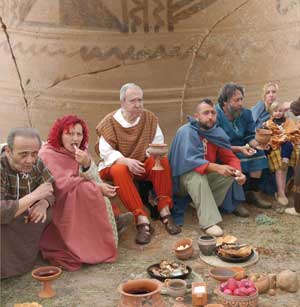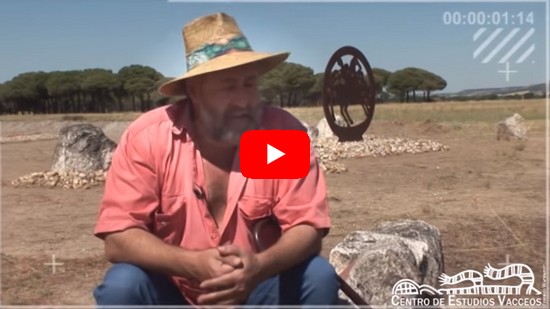
Federico Wattenberg Center for Vaccean Studies (University of Valladolid)
PINTIA VACCEA
The Vaccean legacy
The heritage of the vaccea culture in today's society
The historical written accounts describing the Vacceans deal largely with the Roman conquest of Spain. These accounts, complemented by the changing archaeological record, illustrate a new era in the history of the Middle Duero Valley.

Recreation of the funeral banquet
After the Roman conquest, the Romanization of Spain (the native assimilation of Roman culture) should not be confused with the end of the Vaccean culture that had been in place for much of the first millennium B.C. The extensive fields of grain, the unique mud and wood architecture, the jars (oinochoes) used to serve drinks, the iron grills, and the milk-fed lambs that would be turned into succulent meals are still today a legacy that, although originating a long time ago, is due to the imprint of our Celtic, and especially Vaccean, past.

Survival in time of forms of the Vaccean pottery for wine service: left, various pitcher of beak found in Las Quintanas and Las Ruedas; right, set of Peñafiel pitcher (Ernesto del Campo Blanco Collection)
Maybe you're interested...






